Earlier this year, Stage IV Endometriosis clenched its grip on my body. Desperate for help, I began researching the Endo Diet, and everything I could about my disease. I had heard from an emergency room doctor and several other endometriosis patients that an anti-inflammatory diet, like the one designed by Dr. Weil, could help with the pain. I completely wrote this off as a placebo effect, and couldn’t understand how food could touch my pelvic pain.
One late evening, I curled up with my trusty heating pad and a copy of Dr. Andrew Cook’s book Stop Endometriosis and Pelvic Pain. The information I found in this great resource (which I read, cover to cover, before shoving it into my husband’s hands as homework) completely changed my outlook on food and its role in managing my chronic disease.
The basic idea is that endometriosis is fueled by estrogen. In our modern world, where genetically modified organisms (GMOs) and uber-processed foods abound, external sources of estrogens can be found almost everywhere you look. We have all heard about the risks associated with BPA-containing plastics and GMOs, but what about the foods we already consider healthy? Many different chemicals and even natural foods contain properties that create excess estrogens, or compounds that mimic estrogen. Not only are you fueling your body while eating a seemingly healthy snack of soy beans, you might unwittingly be fueling your worst enemy: endometriosis.
I was already scheduled to undergo excision surgery when I made the switch to the “Endo Diet,” which is basically an anti-inflammatory/anti-estrogen-increasing diet. I began with a daunting step: one month complete detox. I went on a strict gluten, soy, dairy, sugar, chocolate, caffeine, and alcohol-free regimen. On top of that, I began eating only organic foods. It sounds far worse than it really is. The best way to approach this change is to think of these foods as allergies. I have a peanut allergy, which I developed in my early twenties, and I became conditioned to think of peanuts as a dangerous food. As much as I once loved peanut butter, I have developed an aversion (as anyone would after experiencing anaphylaxis!). I tried to approach this in the same way: if I eat these foods, I will feel sick.
Surprisingly, I stayed satisfied despite dropping my favorite foods: pastas, Greek yogurt, cheese, and desserts. I tried to stay away from substitutes for a while, which makes it easier to envision this as a new lifestyle. By the time I had my surgery, my bowel symptoms that I had just accepted as my “normal” became a thing of the past. No longer was my belly bloated, painfully bound, or leaving me rushing to the restroom. This, of course, is hard to attribute entirely to the diet, since I have bowel endometriosis, but it certainly points to some definite benefits when added to proper treatment.
Not only were some of my symptoms relieved, but over the course of 6 weeks, I lost close to 15 pounds! After my excision surgery, when my detox period was finished, I began reintroducing foods (one at a time) to see if I could pinpoint which foods were really a problem. I found that gluten, soy, and dairy all had correlations with different bowel symptoms, so those have become big no-no’s for me. Sugar and chocolate have not caused any symptoms, but I still try to keep them as “limited” foods, meaning I will allow small amounts, unless I can use a healthier option. One reason to limit chocolate is that most packaged chocolates include soy lecithin. While not enough to make me queasy, I still want to make sure I am not getting much soy. I also do not use white, processed sugar in my own cooking (I use honey, maple syrup, or agave nectar), and I try to make my own chocolate treats with baking cocoa instead of buying processed foods. I still allow myself a treat here and there, but I do my best to make my own foods at home, where I can control the ingredients. Finally, because I am trying to get pregnant, I do not drink alcohol or coffee, but drink decaffeinated teas once or twice a week.
I see many women considering or trying to adhere to the Endo Diet with questions about what is OK to eat, or hoping for new ideas. It sounds like you subsist solely on fruits and veggies! Well…I kind of do! The bulk of my food is fresh, organic, or locally grown fruits and veggies. I like to talk to the local farms about their use of pesticides, and make my decisions to buy non-organic based on their farming techniques. To be honest, it is HARD to find quality, fresh, and affordable organic food, so I have a few local places I feel comfortable buying from, even though they aren’t certified organic farmers. I wash those fruits and veggies thoroughly. Any meat that I buy, however, I make sure is organic, and if possible, grass-fed. Chicken is especially important, because of added growth hormones.
To stay full, and keep long-lasting energy, I snack on nuts (no peanuts, of course!) and make sure I have enough fiber and protein with beans and meat. Gluten-free oatmeal has become my new best friend, and I love my Smitten Kitchen cookbook, which includes an amazing recipe for homemade granola. It’s quick, delicious, and a great on-the-go breakfast. I use coconut oil in almost everything I make, and eggs are another great source of protein in the morning.
So what are some foods I eat on the Endo Diet? Take a look!
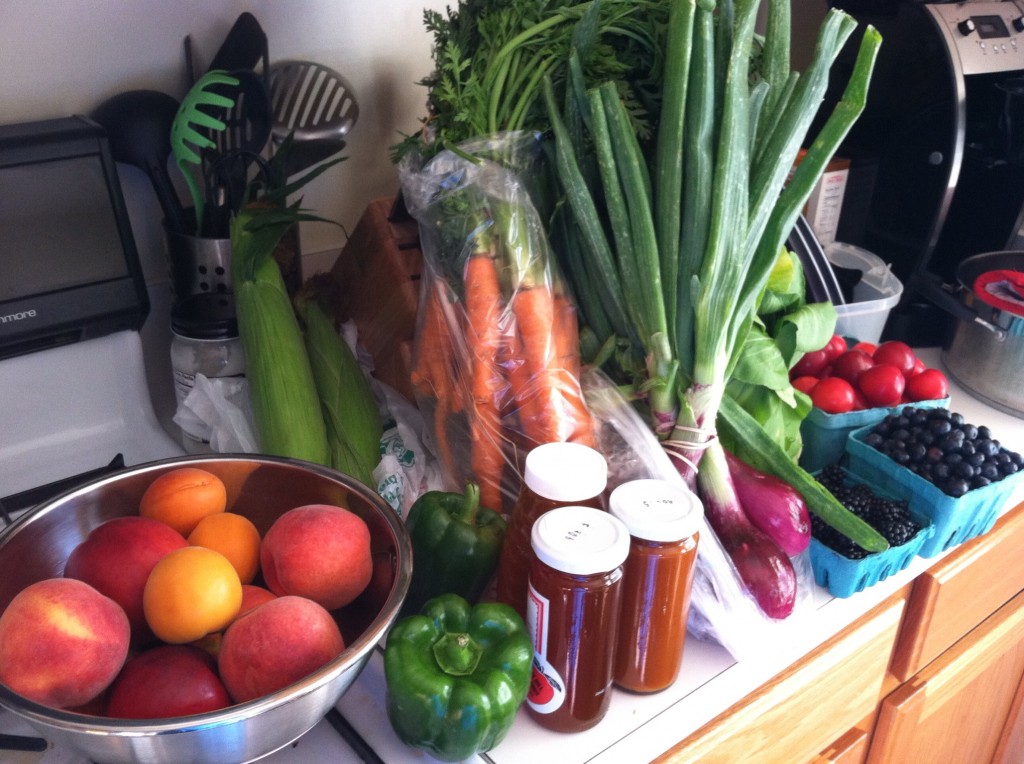
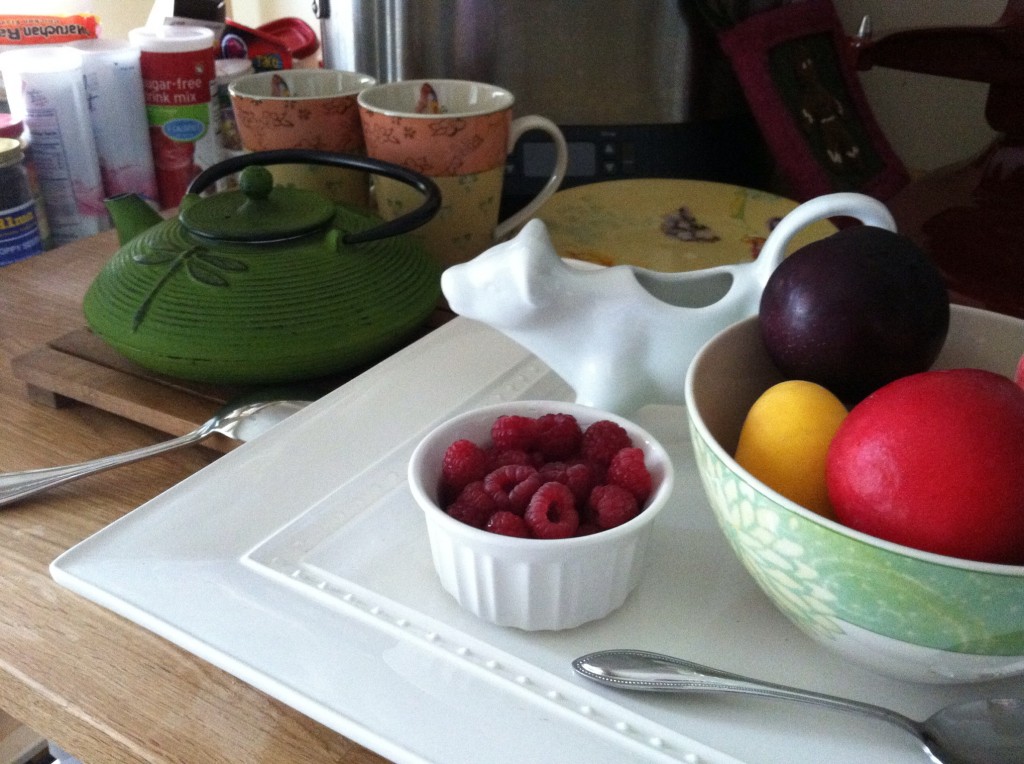
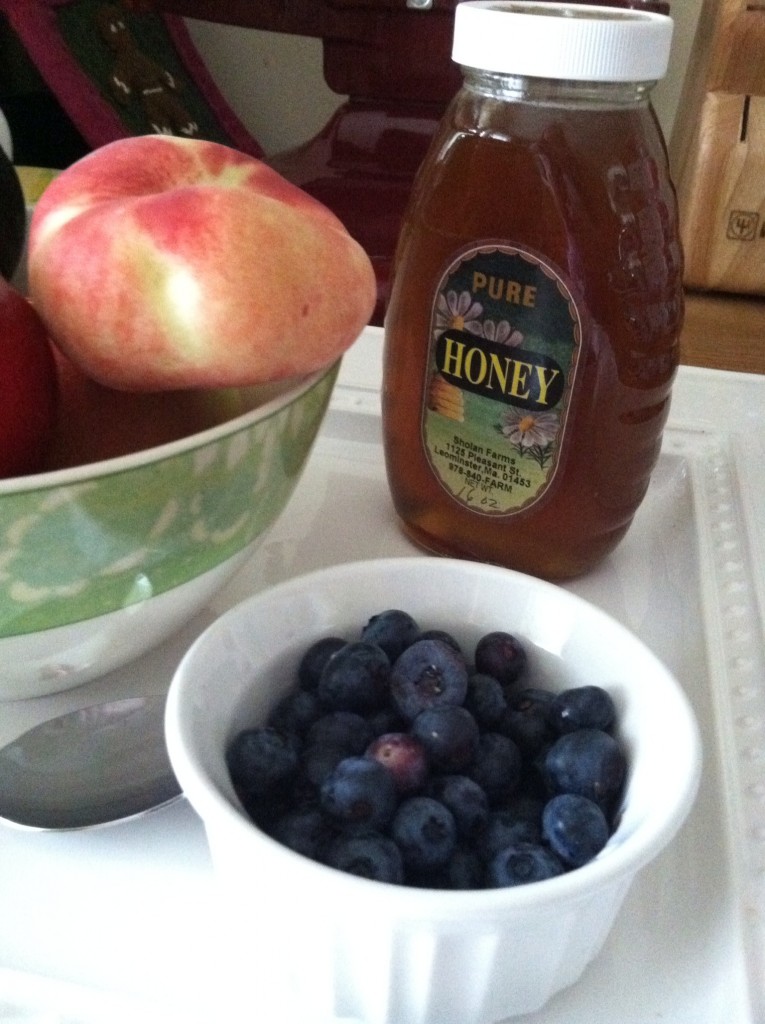
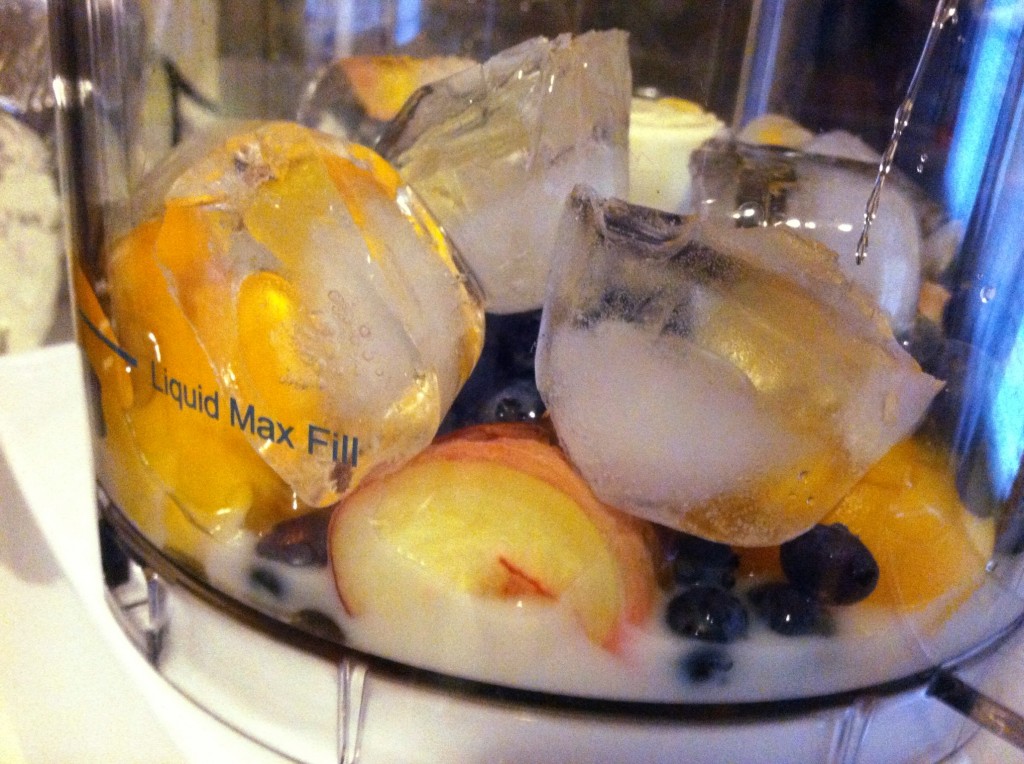
I’ll continue to share my favorite foods and recipes, but today, I made this delicious smoothie. Even my husband liked it, which is fairly pretty uncommon when it comes to my Endo Diet.
Farm Fresh Peach and Blueberry Smoothie
2 peaches
1 cup of blueberries
1/4 cup vanilla rice milk
2 Tbs raw honey
handful of ice cubes
Wash, pit, and chop the peaches. Wash the blueberries, letting impurities and stems float to the top of the water for removal. Add all ingredients in a blender or food processor. Blend roughly 1-2 minutes, or until smooth. Serve as a drink, or freeze into popsicles, and enjoy this delicious evening treat!
Kelsey is an Early Childhood Educator and blogger from the Boston area. She chronicles her journey using sewing as a positive outlet while living with chronic pain and Stage IV Endometriosis. Diagnosed at 22, Kelsey has spent six years learning about her disease, and has recently become active in Endometriosis research and advocacy. She is a published poet who dreams of writing children’s books, and opening her own preschool that supports reading development. To read more about Kelsey’s daily dabblings in sewing, as well as recipes, preschool curriculum ideas, and information about endometriosis, visit her blog at www.silverrosewing.blogspot.com









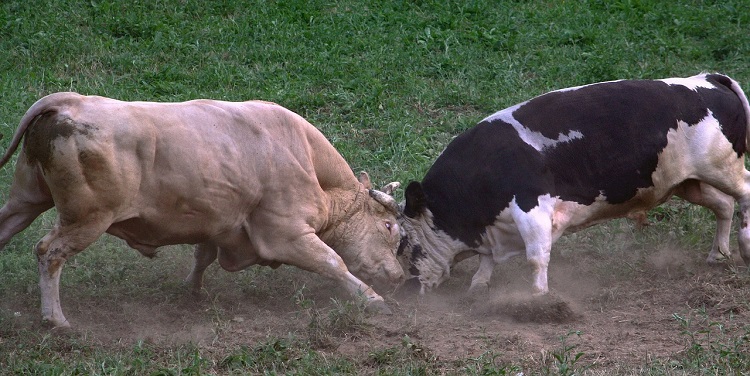


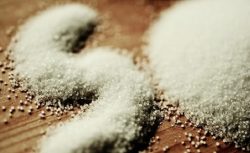
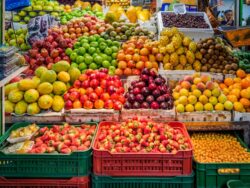
Thanks for the article, it is encouraging! I just went through surgery and now on Provera, but I’m detoxing my body. I feel like this is going to be so difficult because I love food and I don’t like to cook :(. Finding healthy non gluten and dairy free options is going to be difficult. If you have any easy recipes please let me know.
Someone please give me a detailed list of everything that’d ok to eat